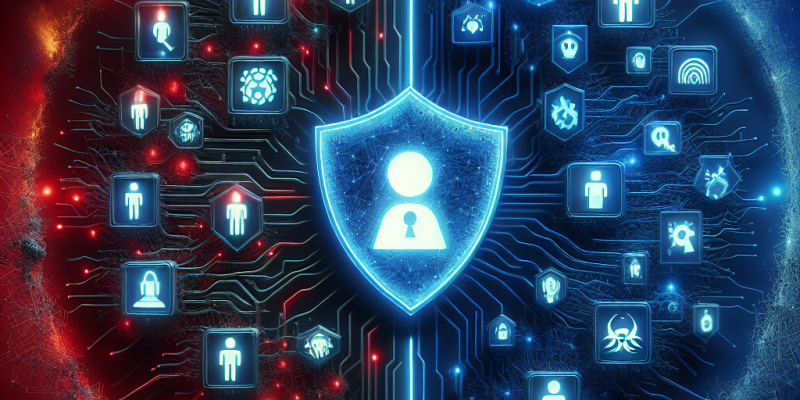The Role of AI in Cybersecurity: Enhancing Defense or Creating New Vulnerabilities?

The expansive growth of technology has led to significant transformations across various industries, and cybersecurity is no exception. As cyber threats become increasingly sophisticated, the role of artificial intelligence (AI) in cybersecurity has garnered attention from businesses, governments, and the tech community alike. While AI holds the promise of enhancing defensive capabilities against cyberattacks, it also raises concerns about creating new vulnerabilities that could be exploited by malicious actors. This article explores the dual role of AI in cybersecurity, examining both its potential benefits and the risks it introduces.
Enhancing Cybersecurity Defense
1. Threat Detection and Analysis
AI excels at processing vast amounts of data at incredible speeds, making it well-suited for threat detection. Machine learning algorithms can analyze network traffic patterns, user behaviors, and system logs to identify anomalies that may indicate potential security breaches. By continuously learning from historical data, AI systems can adapt to new threats and enhance detection capabilities over time.
2. Automated Response
In the face of an imminent cyber threat, time is of the essence. AI can automate responses to detected threats, allowing organizations to mitigate risks before damage occurs. Automated systems can isolate affected devices, implement security protocols, and even deploy countermeasures without human intervention, reducing the response time significantly compared to traditional methods.
3. Predictive Analytics
AI’s predictive capabilities enable organizations to forecast potential vulnerabilities and threats before they manifest. By analyzing trends and patterns within data, AI can help anticipate cyberattacks, allowing security teams to take proactive measures to bolster defenses.
4. Enhanced Phishing Detection
Phishing attacks remain a prevalent security threat, targeting users through deceptive emails and messages. AI can significantly improve phishing detection by analyzing communication patterns and identifying signs of fraudulent behavior, thereby helping organizations reduce the risk of falling victim to these attacks.
Creating New Vulnerabilities
1. Adversarial Attacks
While AI can enhance security, it can also be weaponized by cybercriminals. Adversarial attack techniques exploit vulnerabilities in AI models, allowing attackers to trick these systems into making erroneous decisions. For instance, by slightly altering input data, attackers may bypass AI-driven security measures, rendering them ineffective.
2. Automated Cyberattacks
The capabilities of AI are not solely beneficial for defense; they can also enhance the offensive tactics of cybercriminals. Cyber threats can be executed with greater efficiency and precision when powered by AI. Automated tools can launch sophisticated attacks, such as distributed denial of service (DDoS) attacks, at an unprecedented scale, overwhelming systems and overwhelming traditional defenses.
3. Data Privacy Concerns
AI systems rely on vast datasets, which often contain sensitive information. This dependence raises significant privacy concerns; if malicious actors gain access to these datasets, they could exploit them to craft targeted attacks or compromise user privacy. Additionally, the use of AI can inadvertently lead to breaches of compliance, resulting in legal ramifications for organizations.
4. False Positives and Resource Strain
While AI can improve threat detection, it can also lead to a higher rate of false positives, forcing security teams to divert resources to investigate alerts that do not represent genuine threats. This not only strains resources but can also lead to "alert fatigue," where important signals are overlooked amid the noise of false alarms.
Balancing the Benefits and Risks
To maximize the potential of AI in cybersecurity while mitigating risks, organizations must adopt a strategic approach. Here are some recommendations:
-
Integrate Human Oversight: While AI can automate various tasks, human expertise remains crucial. Security teams should complement AI systems with human oversight to evaluate and respond to threats accurately.
-
Continuous Training: As cyber threats evolve, AI models must be regularly updated and trained on new data to improve accuracy and relevance. Organizations should prioritize continuous learning for their AI systems.
-
Collaboration and Information Sharing: Organizations can benefit from a collaborative approach—sharing threat intelligence and best practices across industries and sectors to strengthen collective defense strategies.
- Adopt Robust Security Frameworks: Establishing strong security protocols, including regular risk assessments and audits, can help organizations identify vulnerabilities in AI systems and safeguard against potential attacks.
Conclusion
AI has already begun to revolutionize the cybersecurity landscape, offering innovative solutions to combat an ever-evolving range of threats. However, the integration of AI into cybersecurity practices is a double-edged sword. While it enhances defensive capabilities, it also creates new vulnerabilities that must be proactively addressed. By striking a balance between leveraging AI’s strengths and implementing robust security measures, organizations can navigate the complexities posed by this transformative technology, ultimately making their cybersecurity posture stronger and more resilient.














